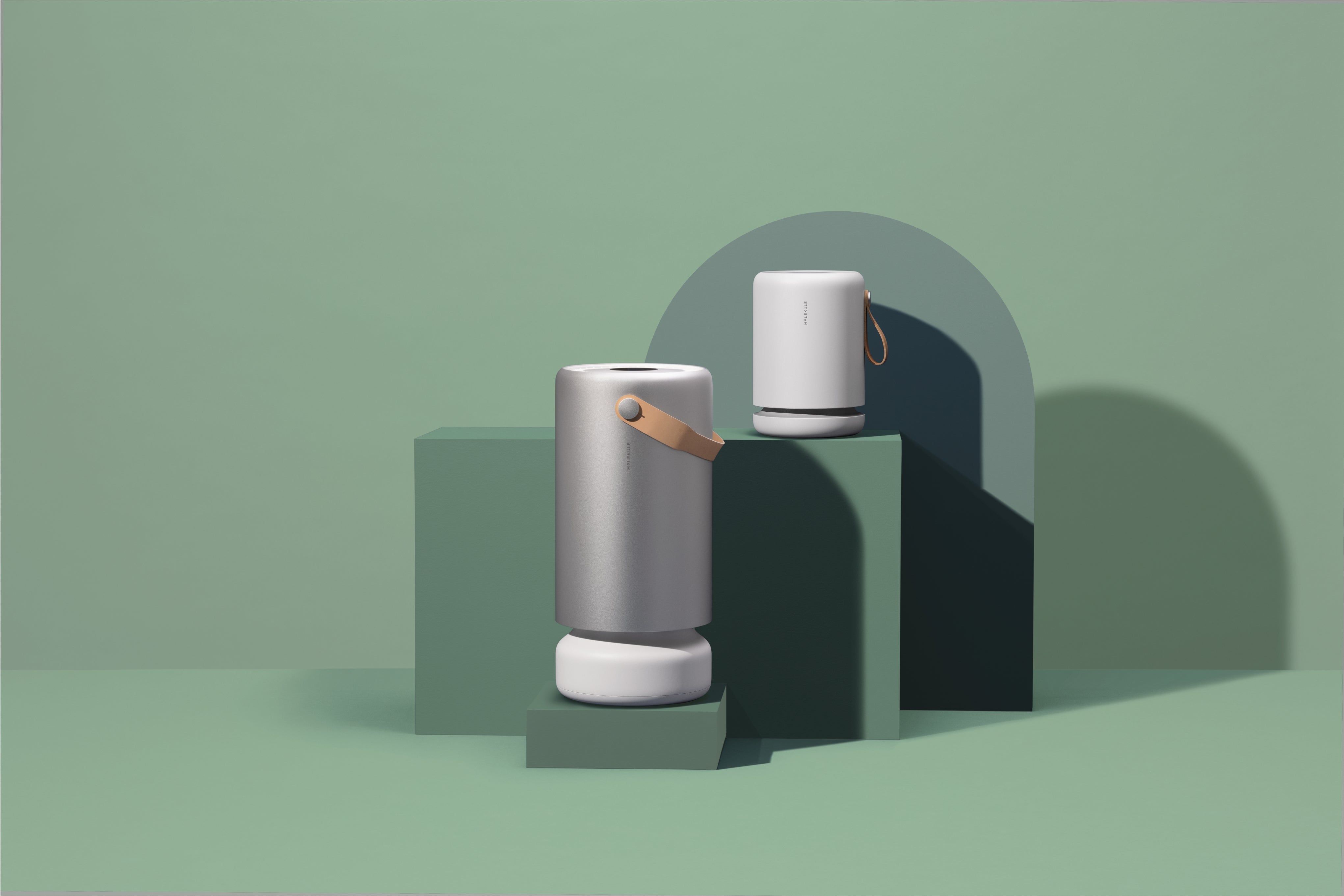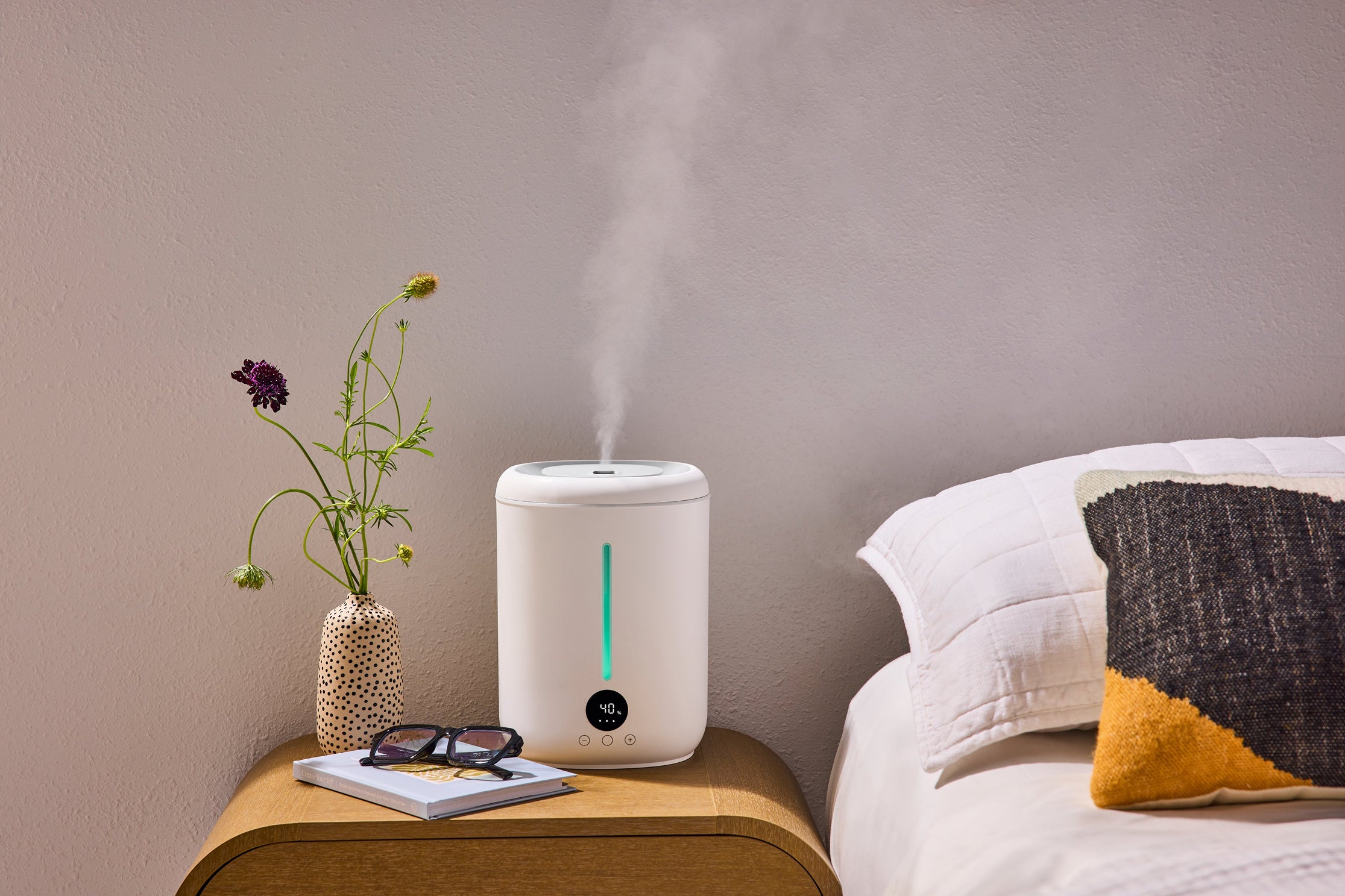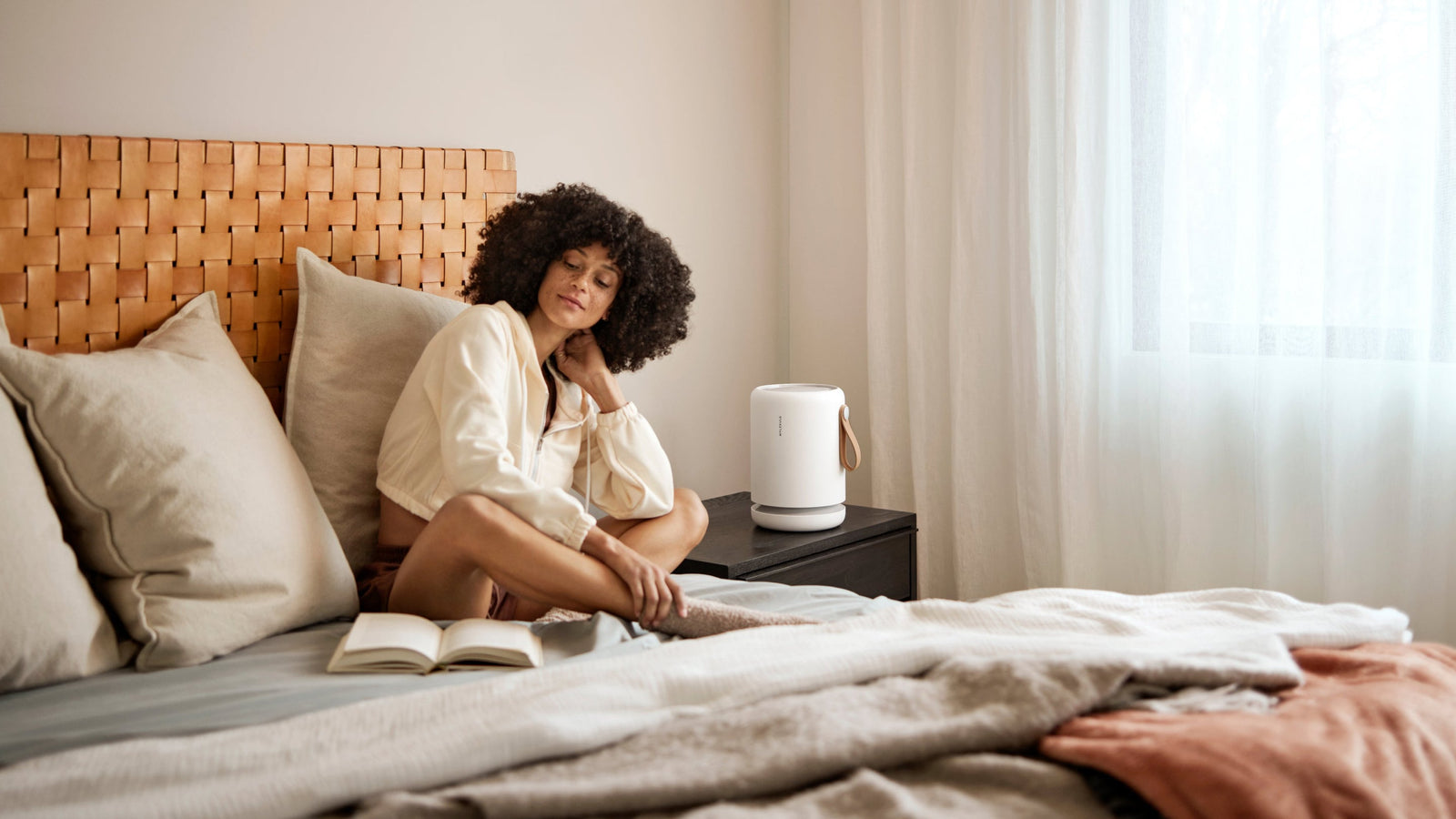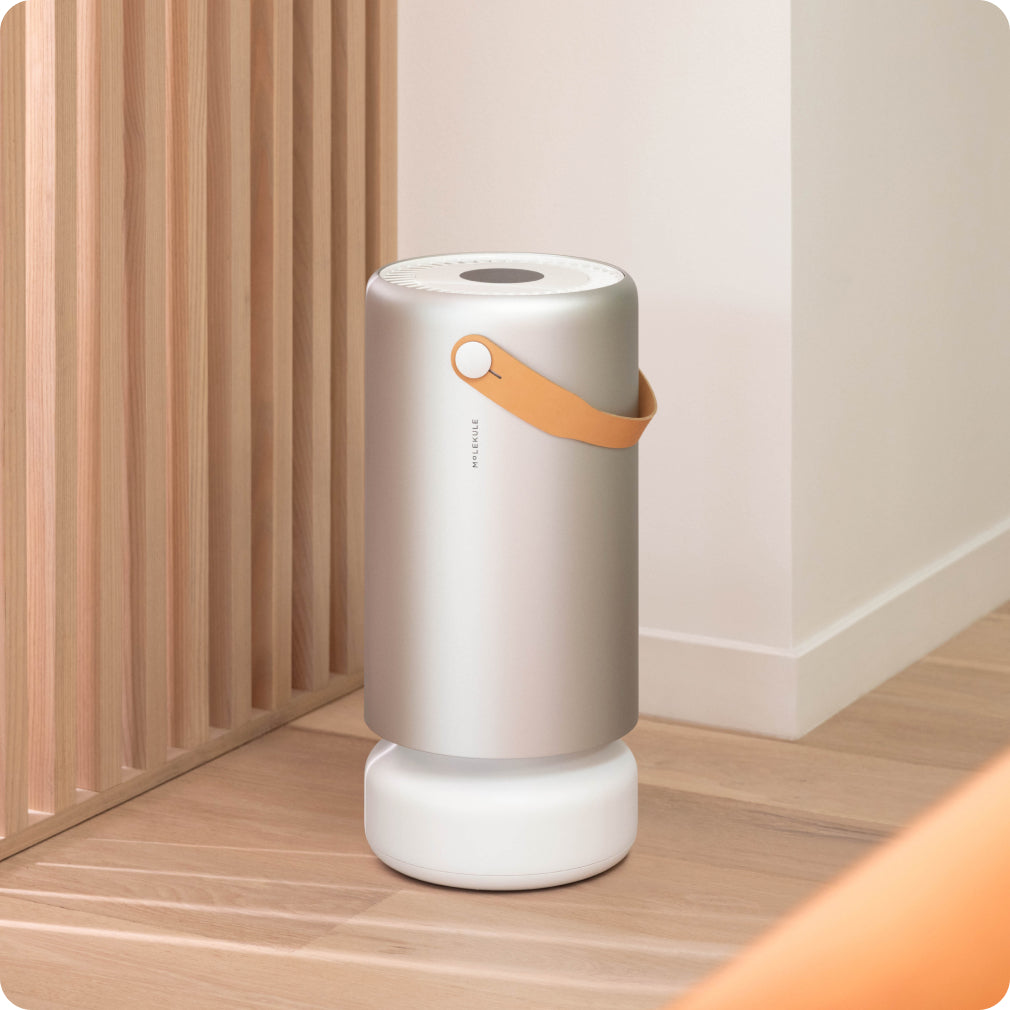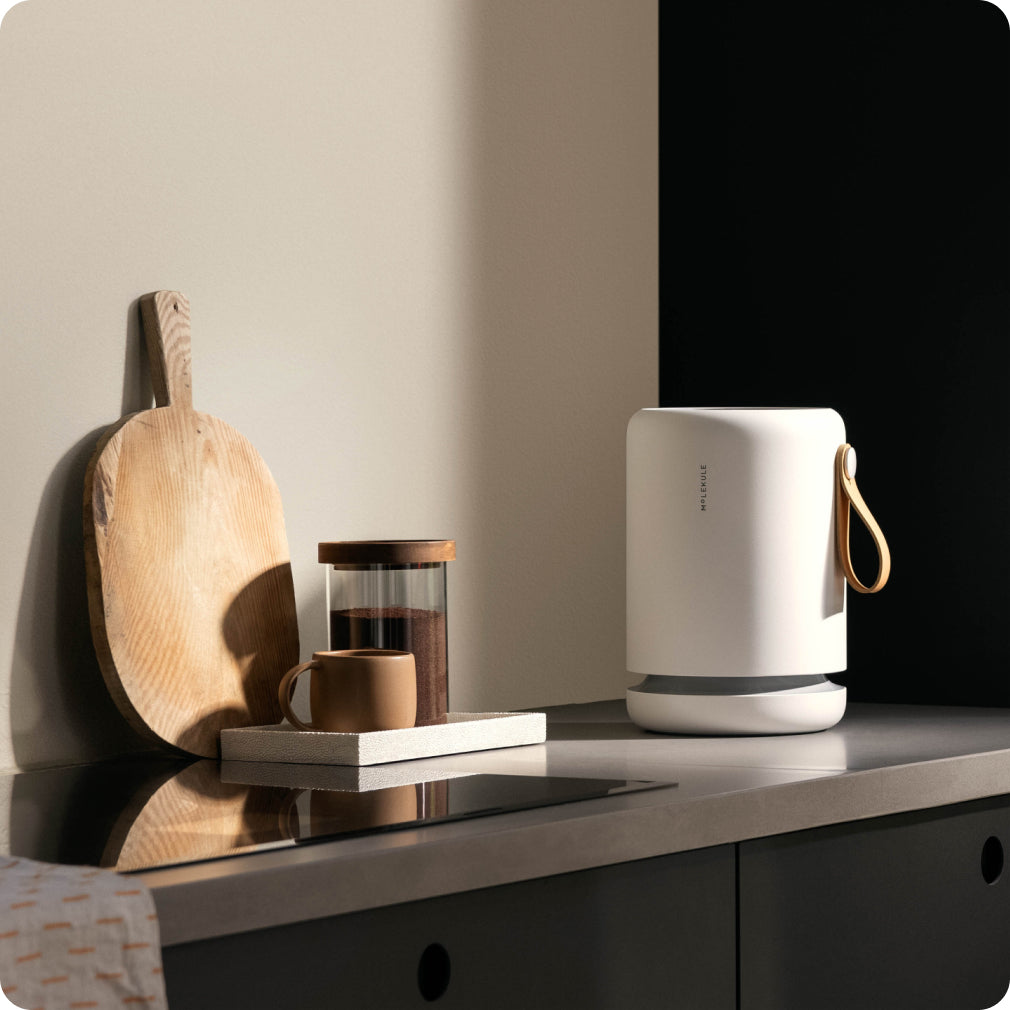If you’ve ever felt like you’re constantly sneezing, rubbing your eyes, or waking up congested no matter the season, dust allergies could be the culprit. For nearly 20 million Americans, dust mite proteins and other indoor particles trigger year-round symptoms that range from annoying sniffles to serious asthma flare-ups.
Managing dust allergies isn’t just about medications. It’s also about creating a cleaner, healthier environment at home. From allergen-proof bedding to air purifiers for dust that go beyond trapping particles to actually destroying them, smart prevention strategies can make a big difference in how you feel day to day.
Key Takeaways
-
Common Symptoms: Sneezing, runny nose, itchy watery eyes, nasal congestion, postnasal drip, and frequent upward nose rubbing in children.
-
Severe Reactions: Asthma attacks, eczema flares, facial pressure, breathing difficulty, and chest tightness requiring medical care.
-
Medical Treatments: Antihistamines, decongestants, corticosteroid nasal sprays, and immunotherapy for long-term relief.
-
Environmental Controls: Allergen-proof covers, hot water washing, humidity control, and advanced air purification for dust mites.
-
Advanced Relief: Molekule's PECO-HEPA technology provides molecular-level allergen destruction for superior symptom control.
What Causes Dust Allergies?
Dust allergies represent an immune system overreaction to proteins found in dust mites, pet dander, pollen, and other microscopic particles commonly found in household dust. The American College of Allergy, Asthma & Immunology confirms that dust mites are one of the most common indoor allergens, with symptoms potentially present year-round due to constant exposure in home environments.
Dust mites are microscopic, eight-legged relatives of spiders that feed on dead human skin cells and thrive in warm, humid conditions. When you encounter dust mite proteins, your body produces immunoglobulin E (IgE) antibodies that trigger the release of histamine and other inflammatory chemicals, causing the characteristic allergy symptoms that can significantly impact daily life and sleep quality.
Recognizing Dust Allergy Symptoms
Dust allergies can show up in many different ways, from mild sneezing to serious breathing problems. Knowing the full range of symptoms, and when they tend to flare up, makes it easier to tell if dust is the trigger behind your discomfort.
Common Dust Allergy Symptoms
|
Mild Symptoms |
Moderate Symptoms |
Severe Symptoms |
|
Sneezing |
Persistent congestion |
Asthma attacks |
|
Runny nose |
Facial pressure and pain |
Breathing difficulty |
|
Itchy, watery eyes |
Frequent cough |
Chest tightness |
|
Nasal congestion |
Eczema flares |
Wheezing or whistling sounds |
|
Postnasal drip |
Sleep disturbances |
Severe skin inflammation |
Mayo Clinic research indicates that dust allergy symptoms often worsen during or immediately after cleaning activities like vacuuming, sweeping, and dusting because these processes stir up settled allergens, making them easier to inhale. Symptoms are typically most severe in bedrooms where dust mites concentrate in mattresses, pillows, and bedding materials.
Warning Signs Requiring Medical Attention
Certain symptoms warrant immediate medical evaluation. Seek emergency care for wheezing or shortness of breath that worsens quickly, severe breathing difficulty with minimal activity, or persistent symptoms that interfere with sleep and daily activities. Understanding natural congestion remedies can complement your medical treatment.
Children may display frequent upward rubbing of the nose, dark circles under the eyes from chronic congestion, and behavioral changes due to sleep disruption from nighttime symptoms. The Allergy & Asthma Foundation of America notes that untreated dust allergies can lead to chronic sinus infections, ear infections, and worsening asthma control.
Medical Treatments for Dust Allergy Relief
Managing dust allergies often requires a mix of medications, depending on symptom severity. Options range from quick-relief pills and sprays to long-term therapies that retrain your immune system.
-
Antihistamines (OTC): Allegra, Claritin, and Zyrtec block histamine to reduce sneezing, runny nose, and itching. Best taken daily for consistent relief.
-
Decongestants (OTC): Pills, liquids, or sprays ease stuffiness by shrinking swollen tissues. Use sprays short-term only to avoid rebound congestion.
-
Corticosteroid Nasal Sprays (Rx): Flonase, Nasonex, and Nasacort reduce inflammation and provide stronger, longer-lasting relief.
-
Cromolyn Sodium (OTC): A preventive nasal spray that stabilizes mast cells to stop reactions before they start.
-
Immunotherapy (Long-term): Allergy shots gradually build tolerance to dust mites over 3–5 years. Meanwhile, SLIT tablets (under-the-tongue) provide needle-free, at-home treatment with allergist supervision.
Natural Remedies for Immediate Dust Allergy Relief
Some natural approaches can provide quick symptom relief while complementing medical treatments and air quality strategies.
-
Saline Nasal Irrigation: Neti pots or squeeze bottles clear allergens and mucus, easing congestion. Always use distilled, sterile, or previously boiled water for safety. Learn about maintaining clean air quality to support your nasal irrigation benefits.
-
Steam Therapy & Humidity Control: Steam inhalation loosens mucus and opens nasal passages. Keep indoor humidity between 30–50% to discourage dust mites while preventing overly dry air.
-
Essential Oils & Herbal Support: Eucalyptus oil in laundry may reduce dust mites; peppermint oil can ease nasal inflammation. Natural antihistamines like quercetin, vitamin C, and stinging nettle may help, but consult your doctor before use.
Environmental Controls: Creating an Allergen-Free Bedroom
The bedroom requires the most intensive allergen control since people spend 6-8 hours nightly in close contact with bedding materials where dust mites concentrate. Use allergen-proof, zippered covers on mattresses, box springs, and pillows made from tightly woven fabric that prevents dust mite colonization and allergen escape.
-
Bedding Management: Wash all sheets, blankets, pillowcases, and bedcovers weekly in hot water at least 130°F (54°C) to kill dust mites and remove allergens
-
Temperature Control: Items that cannot be hot-washed should be dried at temperatures above 130°F for 15 minutes to eliminate mites
-
Alternative Methods: Freeze non-washable items for 24 hours to kill dust mites, though this won't remove existing allergens
-
Surface Cleaning: Remove carpeting, curtains, and horizontal blinds that collect dust and cannot be easily cleaned
Advanced Air Purification Systems
Allergy focused air purifiers with molecular destruction technology offer superior relief compared to basic filtration approaches, particularly for individuals with severe dust sensitivities or asthma complications. Traditional air purifiers only trap allergens temporarily, allowing potential re-release when filters become saturated or are changed.
Molekule's PECO-HEPA Tri-Power technology combines particle capture with molecular destruction, breaking down allergen proteins into harmless carbon dioxide and water vapor. This approach eliminates the allergen source permanently rather than just relocating particles, providing more effective long-term symptom relief.
The Molekule Air Pro combines revolutionary PECO technology with true HEPA filtration in an FDA-cleared Class II medical device that destroys allergens in spaces up to 1,000 square feet. Meanwhile, Molekule’s compact air purifiers, such as the Air Mini+, delivers the same PECO-HEPA Tri-Power allergen destruction in personal spaces up to 250 square feet, perfect for bedrooms where dust mite exposure is highest during sleep.
Creating Your Complete Dust Allergy Management Plan
Effective dust allergy relief requires combining medical treatments with comprehensive environmental controls and advanced air purification technology. Begin with appropriate antihistamines and nasal corticosteroids as recommended by your healthcare provider, then implement allergen-proof bedding, hot water washing protocols, and humidity control measures.
Natural approaches to mold prevention complement dust allergy management by addressing multiple environmental triggers simultaneously. Consider professional mold inspection if dust allergy symptoms persist despite comprehensive management, as overlapping environmental triggers may require additional identification and control measures.
The most successful treatment plans integrate medication management, environmental modifications, and continuous allergen elimination through molecular destruction technology.
When to Seek Professional Medical Care
Consult an allergist for a comprehensive evaluation if over-the-counter treatments provide insufficient relief, your symptoms interfere with your sleep or daily activities, or you experience frequent sinus or ear infections. Mindfulness techniques can improve your comfort and help you create a calm environment that’s conducive to deep sleep.
Professional allergy testing can identify specific triggers and guide targeted treatment approaches. Understanding allergy triggers and prevention will help you develop comprehensive treatment strategies.
Seek immediate medical attention for severe breathing difficulty, persistent wheezing, chest tightness, or signs of anaphylaxis. Emergency care is essential for rapidly worsening respiratory symptoms or severe allergic reactions that don't respond to standard treatment measures.
Frequently Asked Questions
What are the most common dust allergy symptoms?
The most common symptoms include sneezing, runny nose, itchy watery eyes, nasal congestion, and postnasal drip. Severe cases may cause asthma attacks, breathing difficulty, chest tightness, and eczema flares requiring medical attention.
How can I tell if I have dust allergies versus a cold?
Dust allergy symptoms persist year-round and often worsen during cleaning or in dusty environments, while cold symptoms typically resolve within 7-10 days. Allergy symptoms include more itching and less fever than viral infections.
What's the most effective treatment for severe dust allergies?
The most effective approach combines antihistamines, corticosteroid nasal sprays, environmental controls like allergen-proof bedding, and advanced air purification with molecular allergen destruction technology for comprehensive symptom relief.
Can air purifiers really help with dust allergy symptoms?
Yes, advanced air purifiers with molecular destruction technology like Molekule's PECO system provide superior allergen relief by destroying allergen proteins rather than just trapping particles, preventing re-exposure and reducing symptom triggers.
How often should I wash bedding to control dust mite allergies?
Wash all bedding weekly in hot water at least 130°F (54°C) to kill dust mites and remove allergens. Use allergen-proof covers and consider adding specialized air purifiers for bedrooms for comprehensive nighttime protection.
When should I consider allergy shots for dust allergies?
Consider immunotherapy if environmental controls and medications don't provide adequate relief, symptoms significantly impact quality of life, or you have concurrent asthma that's difficult to control. Treatment typically requires 3-5 years but can provide long-lasting symptom relief.
